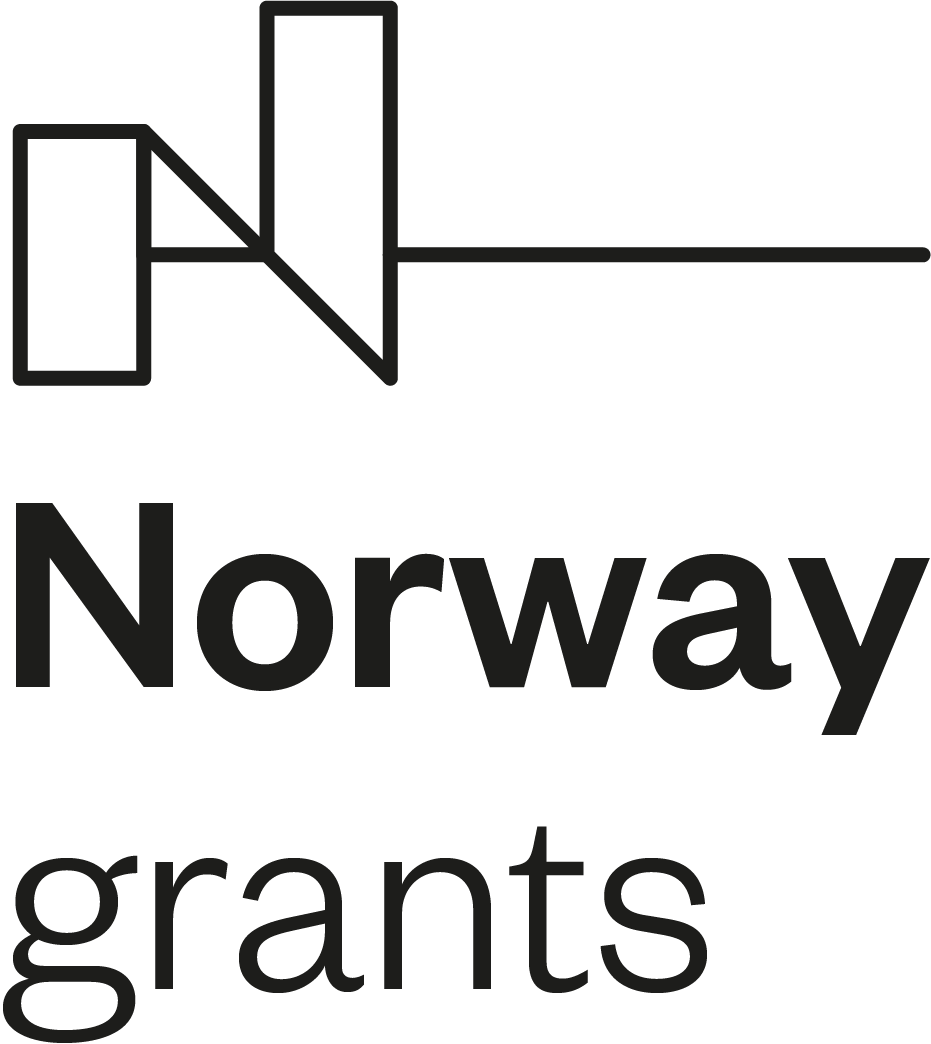 |
Dowody świadczące o nierównościach w możliwościach realizacji aspiracji są powszechne: w wielu segmentach rynku pracy, szczególnie dla wysoko specjalizowanych pracowników, ale także wśród przedsiębioców i osób wykonujących zawody tzw. wolne. Badania empiryczne i debata publiczna są pełne studiów przypadków i kompleksowych badań empirycznych dokumentujących ogromną przepaść między osobami odnoszącymi sukcesy (zazwyczaj mężczyźni z dominujących grup etnicznych i rasowych) i tymi, którym sukces wydarza się ze znacznie niższym prawdopodobieństwem (zazwyczaj mniejszości etniczne i kobiety). W literaturze brak jednak systematycznych badań nad źródłami tych dysproporcji i ich konsekwencjami, często na skutek braku danych i ograniczeń metodologicznych. Nasz projekt proponuje kilka innowacji pomagających przełamać bariery poznawcze w badaniach nad równością w osiąganiu aspiracji. |
Nasz projekt jest interdyscyplinarny, łącząc cztery dziedziny: zarządzanie, ekonomię, metody ilościowe i psychologię. Ważną cechą tego projektu jest to, że oferuje zróżnicowaną perspektywę metodologiczną, łącząc stosowaną mikroekonometrię oraz metody eksperymentalne.
Projekt realizowany jest dzięki wsparciu finansowemu Funduszy Norweskich.
 |
Evidence concerning inequality in ability to realize aspirations is prevalent: overall, in specialized segments of the labor market, in self-employment and high-aspirations environments. Empirical literature and public debate are full of case studies and comprehensive empirical studies documenting the paramount gap between successful individuals (typically ethnic majority men) and those who are less likely to “make it” (typically ethnic minority and women). So far the drivers of these disparities and their consequences have been studied much less intensively, due to methodological constraints and shortage of appropriate data. This project proposes significant innovations to overcome both types of barriers and push the frontier of the research agenda on equality in reaching aspirations. |
Overall, project is interdisciplinary, combining four fields: management, economics, quantitative methods and psychology. An important feature of this project is that it offers a diversified methodological perspective, combining applied microeconometrics, as well as experimental methods.
The project funded through Norway Grants.
-
Odpowiedzi szukamy z Kamilem Wyszkowskim z UNGC w najnowszym odcinku podcastu GRAPE | Tłoczone z danych. Zapraszają: Patrycja Maciejewicz (Gazeta Wyborcza, Wyborcza.biz) & Joanna Tyrowicz (...
-
My dzwonimy co prawda okrągły rok, ale od święta też możemy: Magda Smyk uczestniczyła w XI edycji Ring the Bell for Gender Equality, organizowanego przez 120 giełd papierów...
-
Za nami debata poświęcona obecności kobiet na najwyższych stanowiskach kierowniczych w przedsiębiorstwach.
-
Odpowiedzi szukamy z Jakubem Growcem (SGH) w najnowszym odcinku podcastu GRAPE | Tłoczone z danych...
-
A policy brief of our research in Nature (Scientific Data).
-
Odpowiada Joanna Tyrowicz (GRAPE), Iga Magda (IBS) & ...
-
Jeden z naczelnych argumentów w debatach nad równością szans dla kobiet i mężczyzn to argument, że panie po prostu nie chcą wykorzystywać szans, które los rzuca w ich stronę. W...
-
W tym roku obchodziliśmy już piątą edycję konferencji GGaps, która z roku na rok konsekwentnie zdobywa stałe miejsce w kalendarzu każdego.
-
Czy automatyzacja pracy tak samo dotyka kobiety i mężczyzn? Sprawdza Lucas van der Velde GRAPE | Tłoczone z danych dla...
-
Parytety pozwalają przyspieszyć pewne zmiany, ale nie są cudownym lekiem na mizoginię - rozmowa z Ignacym Morawskim w Pulsie Biznesu
-
Czy pracodawcy dyskryminują bezdzietne kobiety, bo mogą one w przyszłości zostać matkami? Sprawdza Lucas van der Velde GRAPE | Tłoczone z danych dla...
-
Wiele dyskusji nad równością w dostępie do stanowisk zarządczych toczy się w Polsce albo w oparciu o raporty organizacji międzynarodowych (np.
-
Jak statystyka pozwala odkrywać niewidzialne bariery? Sprawdza Hubert Drążkowski GRAPE | Tłoczone z danych dla...
-
Odpowiedzi szukamy z ekonomistą Lucasem van der Velde w najnowszym odcinku podcastu GRAPE | Tłoczone z danych.
-
Odpowiedzi szukamy z ekonomistką Joanną Tyrowicz w najnowszym odcinku podcastu GRAPE | Tłoczone z danych.
-
Inaczej oceniamy mężczyzn, a inaczej kobiety? Sprawdza Lucas van der Velde GRAPE | Tłoczone z danych dla...
-
Czy kobiety odchodzą z pracy przez dzieci? Sprawdza Magdalena Smyk-Szymańska GRAPE | Tłoczone z danych dla...
-
Czy losy pracowników po zwolnieniu z pracy są takie same w różnych krajach? Sprawdza Sebastian Zalas GRAPE | Tłoczone z danych dla...
-
Jak poczucie tożsamości pracownika wpływa na jego wybory na rynku pracy? Sprawdz Katarzyna Bech-Wysocka GRAPE | Tłoczone z danych dla...
-
Odpowiedzi szukamy z ekonomistą Lucasem van der Velde w najnowszym odcinku podcastu GRAPE | Tłoczone z danych.
-
Co by się stało gdybyśmy 50% miejsc w parlamencie zarezerwowali tylko dla kobiet? Sprawdza Lucas van der Velde GRAPE | Tłoczone z danych dla...
-
Jak przypadki molestowania wpływają na kariery kobiet? Sprawdza Lucas van der Velde GRAPE | Tłoczone z danych dla...
-
Czy najlepsze światowe uczelnie wolne są od mowy nienawiści, mizoginii i rasizmu, a naukowycznie są na nich traktowane tak samo jak naukowcy? Sprawdza Joanna Tyrowicz GRAPE | Tłoczone z danych dla...
-
-
Czy dyskryminacja kobiet na rynku pracy wpływa na ich wybory edukacyjne? Sprawdza Katarzyna Bech-Wysocka GRAPE | Tłoczone z danych dla...
-
Mama, która chce wrócić do pracy, często nie może znaleźć opieki dla dziecka, bo w okolicy brak placówek. "Babciowe" tego problemu nie rozwiąże – mówi Magdalena Smyk-Szymańska...
-
Co z tego, że mamy rekordowo niską stopę bezrobocia rejestrowanego, skoro osoby bezrobotne wciąż szukają nowej pracy miesiącami – mówi ...
-
O nierównościach płacowych między kobietami a mężczyznami mówi Magdalena Smyk-Szymańska w rozmowie z red....
-
Co tegoroczna noblistka prof. Claudia Goldin mówi nam o różnicach na rynku pracy między kobietami a mężczyznami? Sprawdza Marcin Dec GRAPE | Tłoczone z danych dla...
-
Prace tegorocznej laureatki są fundamentem do badań rynku pracy pod kątem nierówności – Nagrodę Pamięci Alfreda Nobla komentuje dla...
-
– Claudia Goldin to jedna z pionierek badań dotyczący roli i sytuacji kobiet na rynku pracy – tegoroczną Nagrodę Pamięci Alfreda Nobla komentuje dla...
-
Ile dni potrzeba, żeby zachęcić ojców do skorzystania z urlopów ojcowskich? Sprawdza Magdalena Smyk-Szymańska GRAPE | Tłoczone z danych dla...
-
Czwarta edycja Gender Gaps Conference 2023 dobiegła końca. To były dwa niezwykłe i intensywne dni.
-
Czy przedsiębiorcy chętnie dzielą się zyskami z pracownikami? Udział płac w firmach bierze pod lupę Sebastian Zalas GRAPE | Tłoczone z danych dla...
-
Projekt Huberta Drążkowskiego "Sponsorowane treści w ramach modelu wielorękiego bandyty"...
-
Udział płac w wartości dodanej w Polsce nie spada. Od dekady utrzymuje się na niemal niezmienionym poziomie i wynosi 57% – wynika z najnowszego badania Sebastiana Zalasa i...
-
Czy kobiety są tak samo traktowane w miejscu pracy jak mężczyźni? Magdalena Smyk-Szymańska sprawdza to na przykładzie szefowej i szefów Fed GRAPE|Tłoczone z danych dla...
-
Czy kobiety pomagają kobietom… w męskim świecie? Gościnią tego odcinka podcastu GRAPE |Tłoczone z danych jest Magdalena Smyk.
-
Kobiety w biznesie, kobiety w nauce, kobiety – liderki. Czy są równo traktowane? Felieton Magdaleny Smyk i Joanny Tyrowicz dla...
-
Kobietom trudniej awansować niż mężczyznom, gdy już im się uda, są gorzej traktowane – felieton Joanny Tyrowicz i Magdaleny Smyk-Szymańskiej dla...
-
Czy wysłać zgłoszenie na ofertę pracy, gdy pradodawca oczekuje niebieskookich, a mamy zielone oczy? GRAPE|Tłoczone z danych dla DGP.
-
W pierwszy weekend października mieliśmy zaszczyt i przyjemność gościć badaczy zajmujących nierównościami między kobietami a mężczyznami.
-
O różnicach w płacach kobiet i mężczyzn: jak je mierzyć, i skąd się biorą, FAME|GRAPE opowiadał na tegorocznym Festiwalu Nauki
-
-
Czy powinniśmy dążyć do tego, by istniały branże wyłącznie dla mężczyzn i wyłącznie dla kobiet? GRAPE|Tłoczone z danych
-
-
... za mało kobiet w firmach. GRAPE | Tłoczone z danych dla DGP
-
Our team needs help to speed up the work. Marcin Lewandowski joins us for a couple of months to help with the coding.
-
-
Our team was strengthened by Hubert Drążkowski. Hubert joins us from Warsaw Polytechnic, with experience in data science and imputation methods.
-
Invited by Michał Krawczyk, we gave a talk today to the PhD students of QPE PhD program at the University of Warsaw.

Projekt w partnerstwie z Wydziałem Zarządzania UW i NHH. Kierownikiem projektu jest Joanna Tyrowicz.
Project in partnership with Faculty of Management, University of Warsaw and NHH. PI of this project is Joanna Tyrowicz
Źródło finansowania | Financing : Norweski Mechanizm Finansowy Narodowe Centrum Nauki, GRIEG | Norway Grants, RCN in collaboration with NCN In the framework of GRIEG
Projekt realizowany | Timeline : 07/2020 – 04/2024
Budżet łączny | Total budget: 556 499 eur (FoM UoW: 697 693 zł & FAME: 816 725 zł & NHH: 853 608 zł )
- wynagrodzenia dla podstawowych wykonawców | compensation to researchers: 116 000 zł
- wynagrodzenia dla asystentów badawczych | compensation to research assistants: 144 000 zł
- komputery i oprogramowanie | hardware and software: 10 400 zł
- dane | data: 92,004 zł
- eksperymenty | experiments: 95 000 zł
- konferencje i inne wyjazdy | conference travels: 40 320 zł (for each partner for team meetings) + 44 080 zł (for each partner for conference presentations)
- materiały + promocja | consumables + visibility: 19 926 zł
- koszty pośrednie | overheads : 139 539 zł (FoM UoW) + 163 866 zł (FAME) + O zł (NHH)
Sześć podstawowych pytań badawczych naszego projektu.
- Czy nierówności na rynku pracy sprzyjają podejmowaniu samozatrudnienia z przymusu?
Analizujemy kanały, przez które nierówności na rynku pracy mogą wpływać na decyzję o samozatrudnieniu, formułujemy model teoretyczny i przeprowadzamy empiryczną weryfikację jego przewidywań, dostarczając w ten sposób nowych wniosków na temat powiązań między nierównościami a samozatrudnieniem. - Czy start-upy kierowane przez kobiety podlegają silniejszym ograniczeniom zasobów niż start-upy założone przez mężczyzn? Czy wpływa na to dalszy rozwój firmy?
Dotychczasowe badania wykazały, że przy tworzeniu startupów występuje tzw. dobór assortatywny. Korzystamy z bogatych danych dopasowanych do pracodawców i pracowników, które obejmują kilka dekad wstecz dla Norwegii, aby zbadać uprzedzenia płciowe w nowych firmach venture capital. - Czy zróżnicowanie rad nadzorczych pomaga zwiększyć zróżnicowanie najwyższego kierownictwa, zwłaszcza wśród firm niepodlegających kontroli publicznej?
Wykorzystując unikalne i kompleksowe dane dla ponad 100 milionów firm w Europie, a także innowacyjne metody data science badamy przypadki wejścia kobiet do rad nadzorczych i obserwujemy ich wpływ na zróżnicowanie na pozycjach zarządczych w tych firmach. - Czy różnorodność rad nadzorczych i zarządów ze względu na płeć wpływa na wyniki firmy?
Przedstawiamy pierwsze przyczynowe i kompleksowe szacunki dotyczące wpływu różnorodności w radach płci na wyniki firmy. Nasze badanie byłoby kompleksowe, ponieważ zbada skutki nie tylko dla firm publicznych (notowanych na giełdzie), ale także dla firm prywatnych (nie notowanych na giełdzie). Będzie również kompleksowy w tym sensie, że nasza strategia identyfikacji opiera się na zwykłym biznesie, a nie na konkretnym, zazwyczaj nietypowym czasie reformy przepisów dotyczących ładu korporacyjnego. Wkładem naszej pracy jest połączenie metodologii tzw. instrumentów Bartika z weryfikacją kryterium wykluczenia w data science (uczenie maszynowe) w celu zapewnienia kompleksowej oceny wpływu zróżnicowania płci na wyniki firmy. - Jaka jest rola unikania informacji i potwierdzania stronniczości w ocenie wyników menedżerów mniejszościowych w porównaniu z menedżerami spoza mniejszości?
Osadzone w ramach unikania informacji, zaprojektowaliśmy dwa eksperymentalne ustawienia wyróżniające się interesem własnym uczestników (w jednym projekcie badani zaobserwują bezpośrednią korzyść finansową ze swoich decyzji, w drugim projekt odniesie korzyść dla społeczeństwa). Wnioskujemy o powiązaniach między postrzeganiem poszczególnych umiejętności i zdolności w zależności od płci a wpływem kontekstu na te postrzeganie. - Jaka jest rola confirmation bias w ocenie potencjalnych wyników kandydatów do pracy z mniejszości?
Eksperymentalnie weryfikujemy występowanie potencjalnie niepożądanych konsekwencji wiążących klauzul równości szans.
The key six research questions behind our project are summarized as follows.
- Does labor market inequality drive take-up of necessity self-employment?
Theorizing about the channels through which labor market inequality may influence the choice to become self-employed, we develop a theoretical setup and provide empirical verification of its predictions, thus yielding novel insights into the links between inequality and self-employment. - Are minority-led start-ups subjected to stronger resources constraints than start-ups established by non-minority entrepreneurs? Does it affect subsequent firm growth?
Existing research has demonstrated that there occurs assortative matching in the formation of founding teams, albeit with many methodological caveats and theory shortages. We exploit rich employer-employee matched data that cover several decades back for Norway in order to investigate gender biases in new venture firms. - Does diversity of the supervisory boards help to increase diversity of top management, especially among firms who are not subject to public scrutiny?
Using unique and comprehensive data for 100+ million firms in Europe, as well as innovative data science methods, we study the events of women entering the supervisory (non-executive) board and observe the subsequent changes (or lack thereof) in the composition of top management. - Does diversity of the supervisory and management boards affect firm performance?
We provide the first causal and comprehensive estimates for the effects of gender board diversity on firm performance. Our study would be comprehensive in that it will study the effects not only for the publicly held firms (stock listed) but also for the privately held firms (not listed on the stock exchange). It will also be comprehensive in a sense that our identification strategy is based on business-as usual rather than on specific, typically unusual timing of a corporate governance regulations reform. A contribution of our work is to combine methodology of the so-called Bartik instruments with data science (machine learning) verification of the exclusion criterion in order to provide a comprehensive evaluation of the effects of gender board diversity on firm performance. - What is the role of information avoidance and bias confirmation in evaluating performance of minority managers when compared to non-minority managers?
Embedded in information avoidance framework , we designed two experimental settings distinguished by self-interest of participants (in one design the subjects will observe a direct financial benefit from their decisions, in the other design the benefit will be to the society). We infer the links between the perceptions of individual skills and abilities across genders and how these perceptions are affected by context. - What is the role of confirmation bias in evaluating potential performance of minority job applicants?
We experimentally verify prevalence of potentially undesirable consequences of binding equal opportunity clauses.
-
We present a Gender Board Diversity Dataset (GBDD), which provides a cross-country perspective on women in management and supervisory boards that spans between 1985 and 2020. The data covers 43 European countries and accounts for private companies in addition to the stock-listed ones. GBBD was created using firm-level Orbis data. Our measures are based on a sample of more than 28 million unique firms observed for nearly seven years on average and reporting data about nearly 59 million individuals on management and supervisory boards.
Społeczne, Rynek pracy
-
Wspólnie z UN Global Compact Network Poland oddaliśmy w Państwa ręce raport, który podsumowuje pięć lat badań prowadzonych na podstawie danych o kilkudziesięciu milionach firm i kilkuset milionach członków ich władz w Europie na przestrzeni czterech dekad. Próbowaliśmy odpowiedzieć na kilka pytań, na które wcześniej, bez tych wyjątkowych danych, nie dało się znaleźć odpowiedzi.
The project is implemented in Polish-Norwegian team in a cooperation between University of Warsaw and NHH in Bergen.
|
|
Siri Terjesen is a Dean’s Distinguished Professor of Entrepreneurship at Florida Atlantic University’s College of Business. Her research on entrepreneurship, corporate governance, and strategy has been published in leading journals such as Academy of Management Review, Journal of Management, Journal of Operations Management, Business Ethics Quarterly, Journal of Business Ethics, Leadership Quarterly, Academy of Management Learning & Education, and Strategic Management Journal, and featured in leading media including Bloomberg, US News & World Report, the Times, Huffington Post, and CNBC. She is an Associate Editor of Small Business Economics and Industry & Innovation, and a member of the editorial board of Entrepreneurship Theory & Practice, Leadership Quarterly, and Corporate Governance: International Review. Siri is a co-author of the Global Entrepreneurship Monitor’s Social Entrepreneurship report on the prevalence of social entrepreneurship in 60+ countries around the world. |
|
|
Astrid Kunze is a Professor of Economics at the Norwegian School of Economics in Bergen, Norway. From 2000 to 2002, she was employed as a Research Associate at IZA. She holds a Ph.D. from University College London and an MSc from University of Bielefeld. Her main research interests are labor economics and applied micro-econometrics. She is particularly interested in the causal effects of public policies on labor market behavior. Astrid has conducted studies on the evaluation of parental leave policies, child care programs and cash-for care policies, as well as gender quotas on boards. |
|
|
Bram Timmermans is a Professor at the Department of Strategy and Management. Before joining NHH, Bram worked in the Norwegian institute sector as senior researcher at Agderforsknings’s Innovation Department and as associate professor in innovation studies at Aalborg University. Bram obtained a PhD in the economics of innovation from Aalborg University and received a MSc. in Innovation, Knowledge and Economic Dynamics from Aalborg University (2007) and a MSc. in Economic Geography (2004) at the University of Utrecht. His main research interest lies within the field of innovation and entrepreneurship, new venture team development and performance, labor mobility, team mobility, strategic human resource development, employee diversity, organization theory, relatedness and related variety, and industrial dynamics. |
GGaps 2021: PL | EN | Clip: Meet the Scientific Committee | Clip: Winners of PhD Prize
GGaps 2022: PL | EN | Clip: Meet the Scientific Committee and Winner of PhD Prize
GGaps 2023: PL | EN | Clip: Meet the Scientific Committee | Clip: Winner of PhD Prize
The project funded through Norway Grants. | Projekt finansowany jest z funduszy norweskich.


Czerwiec 2020
Spotkanie otwierające projektu EARHART online, zespół omówił kwestie organizacyjne dotyczące współpracy i wymagań NCN. Omówiliśmy umowę partnerską i obowiązki zespołów.
Styczeń 2021
Organizacyjne spotkanie online, na którym dyskutowano kwestie organizacyjne, artykułu oraz konferencję GGAPS2021.
Kwiecień 2021
Organizacyjne spotkanie online, na którym dyskutowano raport roczny 2020 oraz postępy w artykułach.
Czerwiec 2021
Zorganizowaliśmy dwa spotkania zespołu online, połączone z GGaps 2021 i promowaniem programu badawczego EARHART wśród społeczności akademickiej i decydentów. Zespół NHH przekazał uwagi i skomentował badania z zakresu zarządzania, natomiast zespół warszawski opracował część empiryczną. Zespół EARHART promowała nasz program badawczy wśród uczestników podczas porannej kawy online dla uczestników i wieczornych (online) spotkań. Odbyliśmy także drugie spotkanie podsumowujące współpracę w ramach konferencji GGaps 2021, raportu finansowego i dalszych działań.
Luty 2022
Zorganizowaliśmy spotkanie zespołu online przygotowujące do sporządzenia sprawozdania rocznego. Partnerzy wymienili się informacjami na temat konferencji, na których prezentowali badania z projektu EARHART i omawiali wyniki.
Wrzesień 2022
Spotkanie zespołu w Warszawie. Zespół NHH przyjechał do Warszawy. W ramach spotkania projektowego omówiliśmy postępy w kilku artykułach. Zespół NHH wskazał również na możliwości związane z wykorzystaniem nowatorskiej bazy danych OECD dotyczącej różnorodności płci w zarządach.
Ponadto, zespół NHH aktywnie uczestniczył w konferencji GGaps 2022.
Styczeń 2023
Zorganizowaliśmy spotkanie zespołu online przygotowujące do sporządzenia sprawozdania rocznego. Partnerzy wymienili się informacjami na temat konferencji, na których prezentowali badania z projektu EARHART i omawiali wyniki.
Sierpień 2023
Spotkanie zespołu w Bergen. Warszawski zespół gościł w NHH. Omówiliśmy postępy we wszystkich artykułach projektowych. Pracowaliśmy wspólnie nad danymi i specyfikacjami modeli, oraz ulepszenim motywacji teoretycznej w naszych badaniach w projekcie.
Wrzesień 2023
W ramach spotkania online, zespół Warszawski i NHH wspólnie omówił postępy w artykułach. Wspólnie zorganizowaliśmy konferencję GGaps 2023.
Grudzień 2023
Spotkania zespołu online, zespół warszawski i NHH omawiały postępy i dalszą pracę nad wspólnymi artykułami.
June 2020
Online kickoff meeting of the EARHART grant, the team discussed ways to organize our collaboration and the requirements by NCN. We discussed the partnership agreement and responsibilities of teams.
January 2021
Online organizational meeting, where we discussed the organizational issues, papers and GGaps2021.
April 2021
Online organizational meeting, discussing the annual report for 2020 and progress on papers.
June 2021
We held two online team meeting, combined with GGaps 2021 and promoting EARHART research agenda among the academic and policy-making community. The NHH team provided feedback on management studies, whereas Warsaw team took care of applied economics. The EARHART crew promoted our research agenda to the participants during an online morning coffee for the participants and evening (online) get-togethers. We also held a second meeting, summarizing the collaboration on GGaps 2021, financial reporting and ways forward.
February 2022
We held an online team meeting preparing for annual reporting. The partners exchanged information on where they presented and discussed the results from EARHART project.
September 2022
We held a team meeting in Warsaw. NHH team visited, and we discussed progress on a couple of papers. NHH team participated actively in GGaps 2022 conference. NHH team pointed to a novel database by OECD concerning boards and gender board diversity.
January 2023
We held an online team meeting preparing for annual reporting. The partners exchanged information on where they presented and discussed the results from EARHART project.
August 2023
We held a team meeting in Bergen. The Warsaw team visited NHH team. We discussed progress on all papers, worked together on data and specifications and improved theoretical motivation for our research in this project.
September 2023
We held online team meetings to share progress on our papers and co-organize GGaps 2023, jointly by Warsaw and NHH team.
December 2023
Online team meetings, Warsaw and NHH team discussed the progress and the further work with the joint articles.
Opublikowane | Published
-
Gender board diversity across Europe throughout four decades | Nature (Scientific Data) Przeczytaj streszczenie | Read abstract
We present a Gender Board Diversity Dataset (GBDD), which provides a cross-country perspective on women in management and supervisory boards that spans between 1985 and 2020. The data covers 43 European countries and accounts for private companies in addition to the stock-listed ones. GBBD was created using firm-level Orbis data. Our measures are based on a sample of more than 28 million unique firms observed for nearly seven years on average and reporting data about nearly 59 million individuals on management and supervisory boards. We provide the measures at the level of industry, country and year (the firm-level data is proprietary). We provide three measures. The first is the share of women among all board members in a given industry, country, and year. The second one is the average of the shares of women across firms in a given industry, country and year. We also provide a new measure: the share of firms in a given industry, country and year which report no single woman on their board(s).
-
The evolution of labor share in Poland. New evidence from firm-level data | Gospodarka Narodowa Przeczytaj streszczenie | Read abstract
The only accessible source of financial firm-level in Poland data is database prepared by Central Statistical Office (CSO), available for only minor group of economists. Our study aim at providing to wider audience Orbis database, providing information about substantial part of Polish firms. With this data we present the evolution of labor share of value added in Poland, together with labor productivity and wages. We compare our estimates with indicators prepared by Growiec (2009) and national accounts data. We find that different data source produce differing levels of indicators, however its shapes remain similar. Furthermore we show how construct database using Orbis data and how to improve its coverage using imputation methods.
W toku | Work in progress
-
Revisiting gender board diversity and firm performance Przeczytaj streszczenie | Read abstract
We study the effects of gender board diversity on firm performance. We use novel and rich firm-level data covering nearly 6 million private and public firms spanning the years 1995-2020 in Europe. We augment a standard TFP estimation with firm fixed effects to explore the role of gender board diversity. We construct a shift-share instrument for gender board diversity and find that increasing the share of women on boards is conducive to better economic performance. The results prove robust to a variety of sensitivity analysis. This outcome is driven primarily by firms from the service sector and by smaller firms. The impact was stronger during the early years of our sample.
-
Affirmative action clauses and gender-neutral hiring of junior scholars Przeczytaj streszczenie | Read abstract
We examine the role for external experts in providing unbiased evaluations of candidates. Affirmative action can promote the advancement of minority candidates, but the empirical results have been inconclusive. We conduct a field experiment with Polish academics, asking them to assess the quality of job candidates and decide which candidates should be invited for interviews. We implement two treatments: a binding and a non-binding equal opportunity clause. Additionally, we vary the gender composition of the candidates being evaluated. Our findings show no evidence of bias against women, either in quality assessments or in subsequent interview invitations. Under the binding equal opportunity clause, external evaluators tend to favor women, suggesting alignment between external experts and institutional objectives.
-
Gender diversity in founding teams and hiring Przeczytaj streszczenie | Read abstract
This paper examines the gender gap in entrepreneurship and hiring among new ventures in the first year in Norway, using register data from 2004 to 2013. The study compares the roles and gender of founders and early-stage hiring. The main findings are that female CEOs, both owner and non-owner, are more likely to hire at least one employee, but they hire fewer employees and more part-time workers than male CEOs. Moreover, we tend to find patterns of assortative matching. We discuss the implications of our results on the relationship between gender diversity and the hiring in new ventures.
-
Gender tokenism in corporate boardrooms in Europe Przeczytaj streszczenie | Read abstract
While women constitute 25% of the board members in private European corporations, firms with no women are dominant and merely 10% of firms report more than one woman in the boardroom. We leverage new data, covering 5 million companies from 29 European countries spanning 1986-2020. Using this data, we provide novel stylized facts about the phenomenon of token women in European corporate boardrooms. We emphasize the differences between two types of situation when the corporate boardroom hosts a singular woman: the appointment of the first woman and the barriers to further rise in diversity. We thus contribute to improving our understanding of the conflict between the tokenism hypothesis and diversity spillover hypothesis.
-
Gender board diversity spillovers and the public eye Przeczytaj streszczenie | Read abstract
This study integrates corporate visibility as a crucial factor for gender board diversity spillovers. We investigate whether greater gender diversity in supervisory roles – that is, board positions legally mandated to oversee top management appointments, strategic direction, and compliance – leads to greater gender diversity in top executive positions among publicly listed and private firms in Europe. We use a novel and comprehensive dataset of approximately 1.8 million corporations from 29 advanced and emerging European countries spanning nearly four decades. We confirm positive diversity spillovers for companies which are subject to public scrutiny, such as publicly listed companies or the largest employers. Appointing a woman in a supervisory role is associated with a 5-8 percentage points higher probability of subsequently introducing female talent to the top executive team. In contrast, companies with low corporate visibility, such as private firms, do not show spillovers of gender board diversity.
-
(Gender) Tone at the top: the effects of gender board diversity on gender wage inequality in Europe Przeczytaj streszczenie | Read abstract
We address the gender wage gap in Europe, focusing on the impact of female representation in executive and non-executive boards. We use a novel dataset to identify gender board diversity across European firms, which covers a comprehensive sample of private firms in addition to publicly listed ones. Our study spans three waves of the Structure of Earnings Survey, covering 26 countries and multiple industries. Despite low prevalence of female representation and the complex nature of gender wage inequality, our findings reveal a robust causal link: increased gender diversity significantly decreases the adjusted gender wage gap. We also demonstrate that to meaningfully impact gender wage gaps, the presence of a single female representative in leadership is insufficient.
-
Implicit gender quota in European boardrooms Przeczytaj streszczenie | Read abstract
Despite their economic prominence, private firms have been largely absent from research and policy discussions on board gender diversity. In this paper, we investigate whether and how private firms address board gender diversity. Relying on symbolic management and institutional theories, we posit that private firms balance external pressures for board gender diversity with the potential for symbolic compliance. Using a novel data set covering four and a half million private firms in nearly thirty European countries over the past thirty years, we find evidence of a persistent "one woman board" effect in private firms. Our methodological approaches allow us to tease out the possibility of our results being driven by a lack of women candidates. That is, our approach permits us to tease out demand vs. supply-driven reasons for the "one woman board" effect we find. We interpret this symbolic minimum threshold as a token response by private firms to the external pressures they may be under to enhance their legitimacy. As private firms remain out of the scope of regulation around board gender diversity, the implicit quota consisting of a "one woman board" we find in this study may well remain in a similar way to that in top management roles.
-
Intra-household inequality and tax planning of same-sex couples Przeczytaj streszczenie | Read abstract
In this paper, I present differences in income, intra-household inequality and tax planning between mixed and same-sex couples. By using unique administrative tax data, I find that household incomes of same-sex couples are significantly higher than those of heterosexual couples. While there is no difference in intra-household inequality between heterosexual couples and male same-sex couples, lesbian couples have significantly lower intra-couple income inequality. This is in line with previous research. When it comes to tax planning, there are major differences between heterosexual couples and homosexual couples. While tax planning in heterosexual couples often leads to a high marginal tax burden for the secondary earner, this is not the case for same-sex couples.
-
Pushed into necessity? Labor market inequality and entrepreneurship of disadvantaged group Przeczytaj streszczenie | Read abstract
Theoretical literature on entrepreneurship hints that labor market inequality may constitute a relevant push factor for necessity self-employment, as opposed to aspirational self-employment. Drawing on empirical confirmation, this insight is used in many policy recommendations. We provide a new approach to test and quantify the link between labor market inequality and self-employment. We exploit rich and diverse international data on patterns of self-employment from the Global Entrepreneurship Monitor. We focus on measures of labor market inequality for women, utilizing estimates of adjusted gender wage and gender employment gap, comparable for a large selection of countries and years. Our results show that greater gender disparities in access to and in compensation for wage employment are associated with necessity self-employment, but the effect is small. We find no link for the aspirational self-employment.











